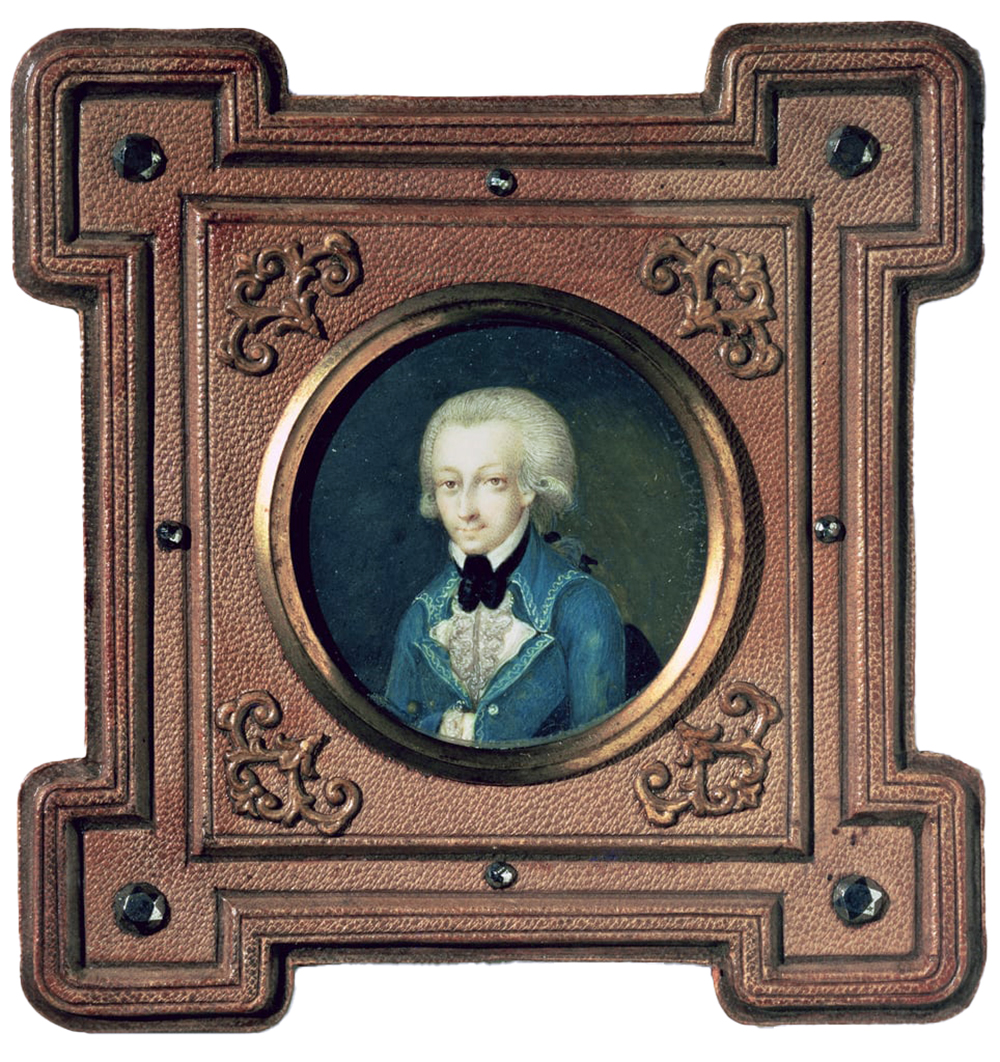
Joseph Haydn's Symphony No. 13 in D major was written in 1763 for the orchestra of Haydn's patron, Prince Nikolaus Esterházy, in Eisenstadt.

The Symphony No. 25 in G minor, K. 183/173dB, was written by the then 17-year-old Wolfgang Amadeus Mozart in October 1773, shortly after the success of his opera seria Lucio Silla. It was supposedly completed in Salzburg on October 5, a mere two days after the completion of his Symphony No. 24, although this remains unsubstantiated. Its first movement was used as the opening music in Miloš Forman's film biographical Amadeus.
Symphony No. 103 in E♭ major is the eleventh of the twelve London symphonies written by Joseph Haydn. This symphony is nicknamed The Drumroll after the long roll on the timpani with which it begins. It is from 1795, and his second-to-last symphony.

The Symphony No. 96 in D major, Hoboken I/96, was completed by Joseph Haydn in 1791 as part of the set of symphonies composed on his first trip to London. It was first performed at the Hanover Square Rooms in London on 11 March 1791. Although it is the fourth of the twelve London symphonies by number, it was actually the first one written and performed. It is popularly known as the Miracle Symphony.
Symphony No. 93 in D major, Hoboken I/93, one of the twelve London symphonies written by Joseph Haydn.
The Symphony No. 98 in B♭ major, Hoboken I/98, is the sixth of the twelve London symphonies composed by Joseph Haydn. It was completed in 1792 as part of the set of symphonies composed on his first trip to London. It was first performed at the Hanover Square Rooms in London on 2 March 1792.
The Symphony No. 99 in E♭ major is the seventh of the twelve London symphonies written by Joseph Haydn. The symphony was written in 1793 in Vienna in anticipation for his second trip to London.

Symphony No. 81 in G major is a symphony by Joseph Haydn composed in 1784 as part of a trio of symphonies that also included symphonies 79 and 80.These three symphonies were specially written for performance in March 1785.
Symphony No. 77 in B♭ major, Hoboken I/77, is a symphony by Joseph Haydn completed in 1782.
Symphony No. 76 in E♭ major is a symphony by Joseph Haydn completed in 1782.
The Symphony No. 75 in D major is a symphony composed by Joseph Haydn between 1779 and 1781.

The Symphony No. 72 in D major is a symphony by Joseph Haydn. The symphony was probably composed between 1763 and 1765. The date of this composition is earlier than its number suggests. This work is not well chronologically placed in the Hoboken numbering system: it was composed fifteen to twenty years before the neighboring works.

The Symphony No. 68 in B flat major, Hoboken I/68, is a symphony by Joseph Haydn. The symphony was composed by 1779 for Nikolaus I, Prince Esterházy. It is chronologically the last symphony by Haydn where the Minuet is second out of the four movements.

The Symphony No. 62 in D major, Hoboken I/62, is a symphony written by Joseph Haydn for the orchestra at Esterháza in 1780 or 1781, a good length of time after the writing of Symphony No. 61.

The Symphony No. 54 in G major, Hoboken I/54, is a symphony by Joseph Haydn, composed in 1774.

The Symphony No. 51 in B♭ major, Hoboken I/51, is a symphony by Joseph Haydn, written in either 1773 or 1774, although the exact dating remains ambiguous.

The Symphony No. 30 in C major, Hoboken I/30, is a symphony by Joseph Haydn composed in 1765, at the age of 33. It is nicknamed the Alleluia Symphony because of Haydn's use of a Gregorian Alleluia chant in the opening movement.

Joseph Haydn wrote Symphony No. 24 in D major, Hoboken I/24, in 1764.

The Symphony No. 7 in C major, Hoboken I/7, is a symphony by Joseph Haydn, sometimes called "Le midi", meaning "The Noon."
The Symphony No. 9 in C major, Hoboken I/9, is a symphony by Joseph Haydn. The symphony was composed in 1762, under the auspices of Nikolaus Esterházy, who allowed the symphony to be performed in Eisenstadt.




